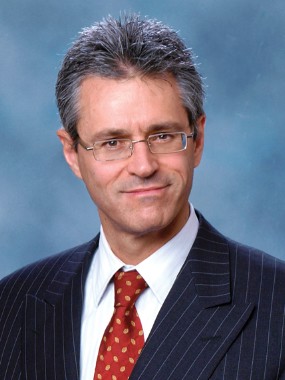This study was supported by the National Institute on Aging, the National Institute of Neurological Disorders and Stroke, the Michael J. Homer Family Fund, the National Center for Research Resources, and the John Douglas French Alzheimer’s Foundation. One of Dr. Paterson’s associates reported ties to TauRx Pharmaceuticals, Bristol-Myers Squibb, Siemens Molecular Imaging, and Allon Therapeutics.
View on the News
Dr. Paterson and his associates at a major referral center for patients with suspected Creutzfeldt-Jakob disease should be commended for illustrating the diagnostic journey these patients and their families must travel "on their way to a final and very unfortunate diagnosis," said Dr. Richard J. Caselli.
|
Dr. Richard J. Caselli |
Many of the most common alternative diagnoses can share many of the same features of CJD, including even MRI mimics, such as "anoxia/ischemia, viral encephalitis (acutely), and focal status epilepticus," which can usually be distinguished from CJD by the clinical context, he wrote.
"Most health care expenditures occur during the final year of life, and CJD is no exception to this general rule. As we attempt to rein in health care costs while sacrificing no degree of medical accuracy or compassion, we owe it to our patients and to society to have the necessary knowledge to consider the diagnosis, establish the diagnosis as efficiently as possible, and then work with patients, families, and palliative care providers to maximize the quality of life for our dying patients," he said.
Richard J. Caselli, M.D., is a professor of neurology at the Mayo Clinic in Scottsdale, Ariz. He reported no financial conflicts of interest. These remarks were taken from his editorial accompanying Dr. Paterson’s report (Arch. Neurol. 2012 [doi:10.1001/2013.jamaneurol.1]).
FROM THE ARCHIVES OF NEUROLOGY


